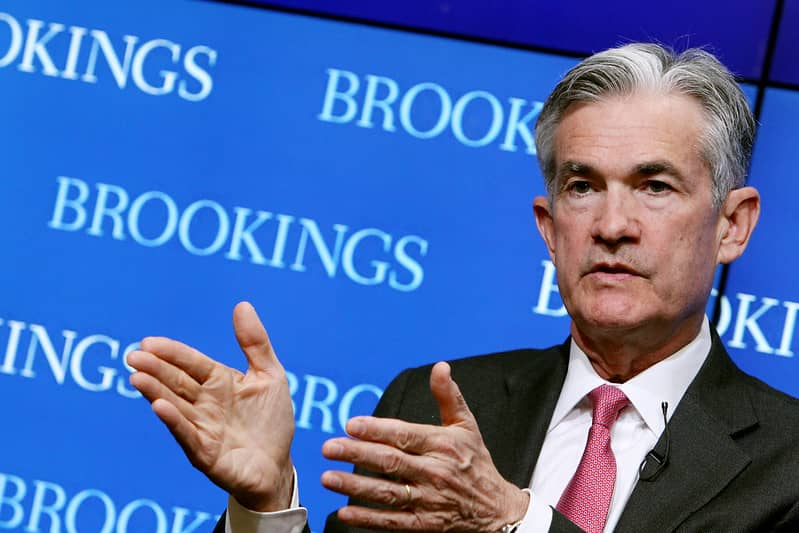Trump Win Slams Brakes on Federal Reserve's Rate Cuts
- Written by: Gary Howes

File image of Federal Reserve Chair Jerome Powell. Photo by Sharon Farmer / Brookings Institution.
Donald Trump's win in the U.S. election will put the brakes on the Federal Reserve's interest rate cutting ambitions.
The Fed will cut interest rates again tomorrow, just hours after Donald Trump beat Kamala Harris in the race to the White House; however, the odds of further cuts are receding.
"A Fed cut at this week’s meeting is still almost fully priced in, and another one in December is priced in with a probability of around 70%. Beyond that, the main question is whether the Fed will have less room to ease monetary policy given Trump’s proposed economic measures," says Chiara Silvestre, an economist at UniCredit Bank.
According to the CME FedWatch Tool, the probability of a 25-basis-point rate cut in January, assuming a half-point cut this year, has declined from 69% a month ago to 32% today.
How Trump intends to shape the U.S. economy will be all the easier now that his Republican party has control of the U.S. Senate and looks on course to maintain a majority in the House of Representatives.
The administration will introduce a series of stringent import tariffs and looks set to reduce taxes.
Economists at Nomura now expect just one Fed cut in 2025, with policy on hold until the realised inflation shock from tariffs has passed.
"We expect Trump to follow through on his campaign proposals to raise tariffs, leading to a significant near-term boost to inflation and modestly lower growth," says David Seif, an economist at Nomura. "We expect some additional easing in 2026, but have raised our terminal rate forecast to 3.625% from 3.125%."
Economists at Rabobank assume that Trump will increase some tariffs relatively quickly. Because of this, they think the Fed's easing cycle could end early next year as policymakers react to the inflationary implications of tariffs.
Wells Fargo economists say they are reassessing their forecasts for the Federal Reserve's base rate in the wake of the election.
"The FOMC's reaction function likely would be more hawkish in response to higher inflation from tax cuts than from tariffs. Tighter monetary policy is an effective method for slowing demand growth, but it cannot do much to combat inflationary pressure from a supply shock such as tariffs," says Wells Fargo economist Jay Bryson.
Wells Fargo, one of the country's biggest lenders, says its current forecast is for the FOMC to cut its target range for the federal funds rate, currently 4.75%- 5.00%, to 3.00%- 3.25% by the end of next year.
"Risks to our fed funds rate forecast are skewed to the upside," says Bryson.
Higher U.S. interest rates will meanwhile slam the brakes on rate cuts at other global central banks.
This is because central banks risk significantly devaluing their domestic currencies by cutting interest rates faster than the Fed.